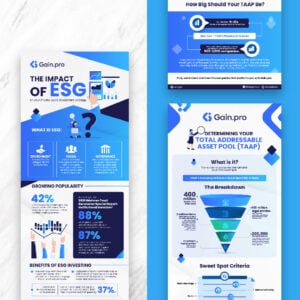
Software updates are rolling out daily, and the never-ending stream of features is overwhelming. If you’re involved in testing, the pressure to catch bugs before launch feels like a constant uphill battle. Manual testing is significant, but keeping up with rapid releases can feel impossible. Don’t worry. There’s a secret weapon that can help you improve efficiency and accuracy. In this article, you will learn how to use AI for software testing and some tools to help you get started.
Benefits of AI in Software Testing
Using AI for software testing improves accuracy, efficiency, and cost-effectiveness.
Improved accuracy
AI-powered tools automate repetitive tasks like regression, functional, and performance testing significantly faster than manual testing. This translates to time saved and a lower risk of human error during these crucial phases.
Tools like ChatGPT can analyze acceptance criteria and create test cases in seconds. Additionally, AI can assist with test automation by writing behavioral-driven development (BDD) style test scenarios or even generating test scripts and debugging existing code.
Increased coverage
AI testing tools go beyond just speed. They act like eagle-eyed inspectors, spotting hidden defects and bugs in your software by analyzing massive datasets. This not only improves the current software quality, but by identifying patterns in past tests, AI can help prevent future issues altogether.
Cost-Effectiveness
Manual testing requires tedious, repetitive work every time the source code is altered. It requires both time and money. Instead, a testing system powered by AI may carry out these activities regularly and without costing extra. Software testing proceeds more swiftly, which promotes cost reduction.
Five Best AI Testing Tools in 2024
Testsigma
Testsigma is a reliable AI-powered tool with various features for creating automated tests with natural language processing. It’s cloud-based, eliminating the need for installation or setup, and can be used to test multiple software applications.
Mabl
Mabl’s user-friendly interface lets anyone create automated tests without programming experience. This AI-powered tool speeds up testing for busy teams by automating repetitive tasks and running end-to-end tests from start to finish. Plus, Mabl fosters collaboration by allowing clear communication with clients and managers throughout the testing process.
Katalon Studio
Katalon Studio prioritizes quality at the UI layer, using AI to eliminate false positives and deliver a seamless customer experience. It also offers visual testing capabilities for UI and UX, reducing false positives. Adding AI Visual Testing to existing Katalon Studio tests is a breeze, requiring no additional tests, and can be run parallel with functional tests for comprehensive coverage.
Functionize
Functionize is a leading test automation tool that leverages AI and machine learning. It tackles even the most intricate applications for small and large organizations. In addition, Functionize eliminates the need to write repetitive test scripts, streamlining your testing process.
Applitools
This AI and ML-powered tool involves software testing, monitoring, and visual management for web, mobile, and desktop apps. It caters to manual and automated testing needs, making it ideal for engineers and digital transformation teams.
Challenges in Using AI for Software Testing
While AI can be a promising tool, you must remember the challenges in adopting AI in software testing.
Trust
AI testing may yield different results from those using conventional testing tools. Some false positives or baseless analyses may occur during the early adoption of AI in testing. Remember that AI is not a plug-and-play tool that can provide immediate results.
High Cost
Investing in reliable AI tools can be expensive.
Lack of Human Intervention
AI tools can quickly generate and run many test cases without human oversight. While this can improve accuracy, it also introduces potential mistakes if no one monitors the process closely.
Compatibility
Teams may encounter problems with the mismatch of their legacy and AI tools. If integrations are incompatible, this could lead to delays and increased operation costs.
Case Study: How Katalon and QualityKiosk Simplify Software Testing for One of The Largest Banks in India
The project was undertaken in one of the largest private banks in India. With a network of 5,500+ branches and 15,000 ATMs, this bank offers various financial products to its customers. This includes personal banking, corporate banking, asset management, insurance, and investment banking.
Project Scope
The project covers the development of a Loan Origination System (LOS) Platform tailored for the bank. The LOS platform enabled integration with internal and external services for all bank asset-related products and services. It also allowed chatbot-enabled data entry, loan processing, and automated workflow guidelines.
The Problem
The bank faced several issues related to automation testing. However, additional factors set them apart from others in the industry. This includes:
- Frequency of software releases
- Test case complexity
- Script maintenance
- Hiring and retention of testers with expertise in programming languages
The technical considerations further complicated the bank’s plan to improve testing efficiency, accuracy, and quality.
The Solution
Katalon, in partnership with QualityKiosk, provided the bank with a powerful test automation platform that helped the team achieve faster automation with robust features. The bank chose Katalon because it was easy to learn and user-friendly for anyone to create tests. This meant they only needed a few coding experts to keep up with testing demands, helping them streamline testing and scale their team efficiently.
Outcomes
Katalon’s implementation for regression testing resulted in significant improvements in efficiency and development agility. These include:
- Reduced regression test development and maintenance time: This benefit streamlines the testing process and frees up resources for other tasks.
- 40-50% reduction in regression testing time: This enables faster identification and resolution of potential issues.
- Over 53% reduction in test execution time enables more frequent software releases with new functionalities.
The overall impact is a faster development cycle with improved software quality.
About the author

Rowena Zaballa
With a background as a former government employee specializing in urban planning, Rowena transitioned into the world of blogging and SEO content writing. As a passionate storyteller, she uses her expertise to craft engaging and informative content for various audiences.
























